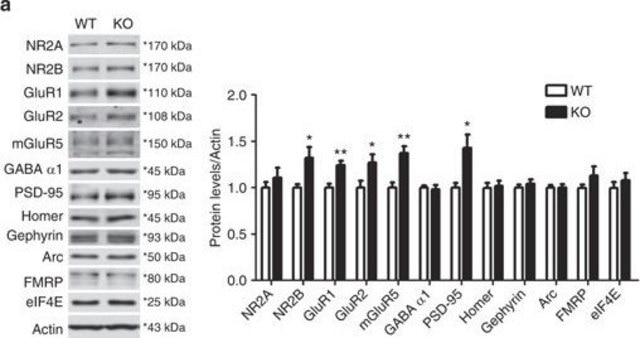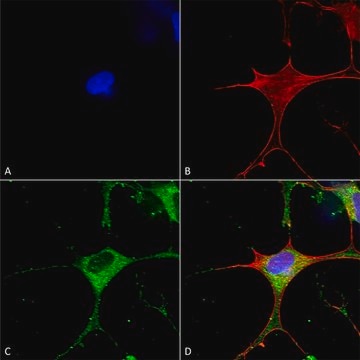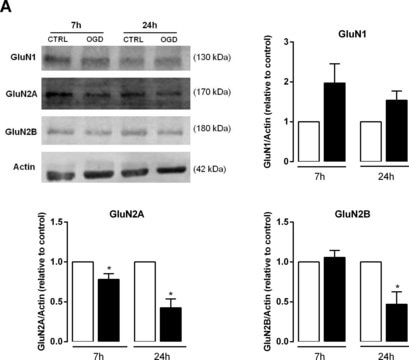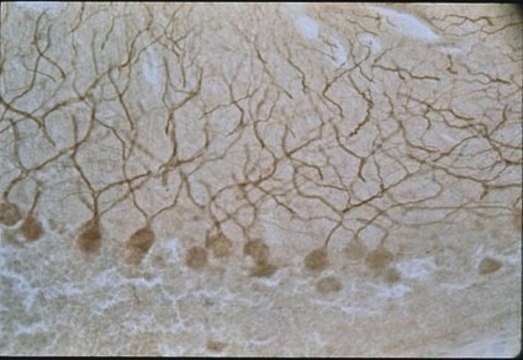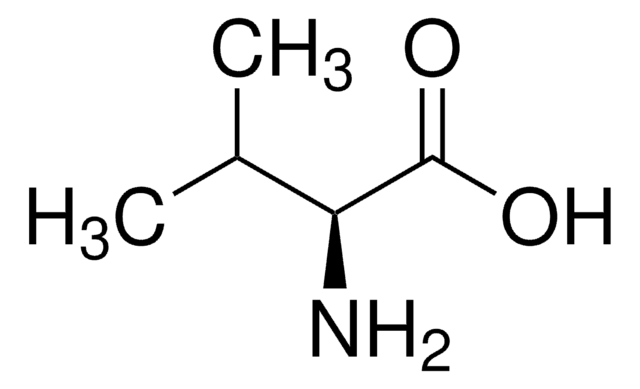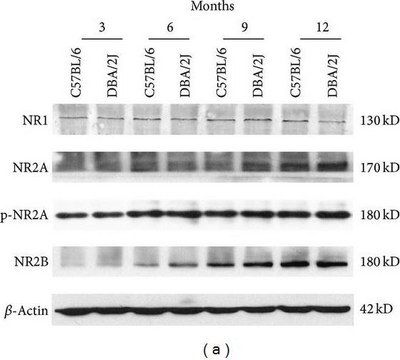06-600
Anti-NR2B Antibody
Upstate®, from rabbit
Synonym(s):
N-methyl D-aspartate receptor subtype 2B, N-methyl-D-aspartate receptor subunit 2B, N-methyl-D-aspartate receptor subunit 3, glutamate receptor subunit epsilon-2, glutamate receptor, ionotropic, N-methyl D-aspartate 2B
About This Item
Recommended Products
biological source
rabbit
Quality Level
antibody form
purified immunoglobulin
antibody product type
primary antibodies
clone
polyclonal
species reactivity
mouse
species reactivity (predicted by homology)
monkey (based on 100% sequence homology), canine (based on 100% sequence homology), bovine (based on 100% sequence homology), rat (based on 100% sequence homology), human (based on 100% sequence homology), chimpanzee (based on 100% sequence homology)
manufacturer/tradename
Upstate®
technique(s)
immunocytochemistry: suitable
immunoprecipitation (IP): suitable
western blot: suitable
isotype
IgG
NCBI accession no.
UniProt accession no.
shipped in
dry ice
target post-translational modification
unmodified
Gene Information
bovine ... Grin2B(537804)
chimpanzee ... Grin2B(473373)
dog ... Grin2B(494009)
human ... GRIN2B(2904)
mouse ... Grin2B(14812)
rat ... Grin2B(24410)
rhesus monkey ... Grin2B(698571)
General description
Specificity
Immunogen
Application
Neuroscience
Neurotransmitters & Receptors
Neurodegenerative Diseases
Quality
Western Blot Analysis:
0.5-2 μg/mL of this lot of antibody detected NR2B (~180 kDa) in rat brain microsomal preparation (Catalog # 12-144).
Target description
Physical form
Storage and Stability
Aliquot to avoid freezing and thawing. For maximum recovery of the product, centrifuge the original vial after thawing and prior to removing the cap.
Handling Recommendations: Upon receipt, and prior to removing the cap, centrifuge the vial and gently mix the solution. Aliquot into microcentrifuge tubes and store at -20°C. Avoid repeated freeze/thaw cycles, which may damage IgG and affect product performance.
Analysis Note
Mouse brain tissue
Legal Information
Disclaimer
Still not finding the right product?
Give our Product Selector Tool a try.
Storage Class
10 - Combustible liquids
wgk_germany
WGK 1
Certificates of Analysis (COA)
Search for Certificates of Analysis (COA) by entering the products Lot/Batch Number. Lot and Batch Numbers can be found on a product’s label following the words ‘Lot’ or ‘Batch’.
Already Own This Product?
Find documentation for the products that you have recently purchased in the Document Library.
Articles
The term neurodegeneration characterizes a chronic loss of neuronal structure and function leading to progressive mental impairments.
Our team of scientists has experience in all areas of research including Life Science, Material Science, Chemical Synthesis, Chromatography, Analytical and many others.
Contact Technical Service